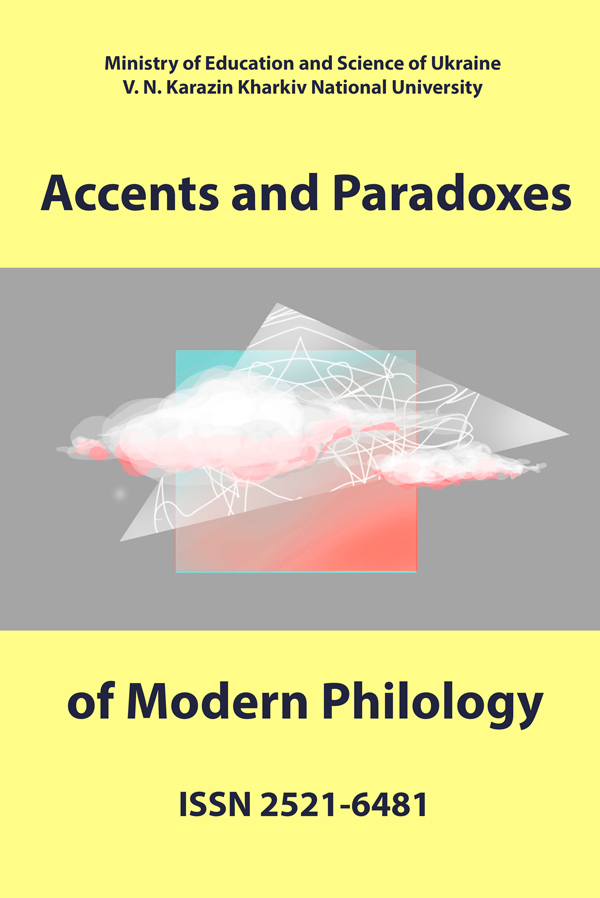Signs of place in Native American literature: affinity of indigenous space and text
Abstract
In this paper, the discussion centers on Native American Literature and the way it is connected with space. The issues to discuss are how space is represented there and why Native American writers attach considerable importance to landscape and space. Evidence suggests such importance is a result of the influence of markedly different indigenous epistemological and ontological paradigms, which traditionally consider land and space in general as a fundamental and spiritual basis of Native American identity. This research examines the emerging role of space in the context of Native American literature. Ecocritical, postcolonial and semiotic approaches were adopted to provide the in-depth analysis of all the factors which contribute to Native American understanding of space. At first, this study reviews the evidence for genetic ties between Native space and literature; secondly, it investigates the factors that determine the significance of spatial elements in Native American literature. Thirdly, it examines the different ways in which spatiality functions in texts written by Native American authors.
Downloads
References
Плахотнюк, Д. В. (2011), “Виды пространства”, Вестник Тюменского государственного университета. Социально-экономические и правовые исследования, Issue №10, cc. 84–90.
“Философия и литература. Беседа с Жаком Деррида”. (1993), в Жак Деррида в Москве: деконструкция путешествия, Москва: РИК "Культура".
Brooks, L. (2008). Indigenous Americas: The Common Pot: The Recovery of Native Space in the Northeast. Minneapolis: University Of Minnesota Press.
Deloria, V., Wildcat, D. and Wilkins, D. (2012). Metaphysics of Modern Existence. Fulcrum Publishing.
Encyclopedia Britannica. (2017). Ojibwa | people. [online] Available at: https://www.britannica.com/topic/Ojibwa [Accessed 6 Apr. 2017].
Erdrich, L., (2017). Where I Ought To Be: A Writer's Sense Of Place. [online] Nytimes.com. Available at: http://www.nytimes.com/1985/07/28/books/where-i-ought-to-be-a-writer-s-sense-of-place.html?pagewanted=all [Accessed 6 Apr. 2016].
Ghulam Murtaza, G. and Bhatti, S. (2015). “Conflict between Euro-American and Native American Attitudes towards Nature: An Echocritical study of tracks and Love medicine by Louise Erdrich”, Europian Scientific Journal, March, Issue 11, pp. 279–289.
Grice, H., Hepworth, C., Lauret, M. and Padget, M. (2001). Begining ethnic American leteratures. Manchester and New York: Manchester University Press.
Harrison, S. G. (2012). Environmental Justice Metafiction: Narrative and Politics in Contemporary Ethnic Women's Novels by Louise Erdrich, Linda Hogan, Ruth Ozeki, and Karen Yamashita. Madison: University of Wisconsin.
Krupat, A. (1989). The Voice in the Margin: Native American Literature and Canon. Berkeley: University of California Press.
Merriam-webster.com. (2017). Definition of SPACE. [online] Available at: https://www.merriam-webster.com/dictionary/space [Accessed: 6 March 2016].
Noodin, M. (2014). American Indian Studies: Bawaajimo: A Dialect of Dreams in Anishinaabe Language and Literature. Michigan: Michigan State University Press.
Riche, M. (2013). “Kinship and corporeality in Louise Erdrich's "Father's milk"”, Studies in American Indian Literatures, winter, Issue 25, pp. 48–68.
Simpson, L. B. (2014). Land as pedagogy: Nishnaabeg intelligence and rebellious transformation, Issue 3, pp. 1–25.
Vizenor, G. R. (1984). The people named the Chippewa: Narrative histories. Minneapolis: University of Minnesota Press.
Welty, E. (1957). Place in fiction. New York: House of Books.
Wheeler, W. (2008). “Postscript on biosemiotics: reading beyond words and ecocriticism”, New Formations, Issue 64.





